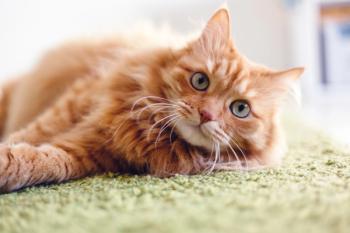
AAFP announces new guidelines for feline hyperthyroidism
A comprehensive guide to the diagnosis and treatment of this common veterinary endocrine disease.
Getty ImagesThe American Association of Feline Practitioners (AAFP) has released guidelines for managing feline hyperthyroidism. Affecting 1.5 to 11.4 percent of cats worldwide, it's the most common endocrine disease in cats more than 10 years old in the United States, according to a release from the AAFP. In fact, feline hyperthyroidism was cited as the
“Our hope is that by using these guidelines, veterinary professionals will be able to diagnose [feline hyperthyroidism] long before the cat becomes the classic scrawny, unkempt patient with a mass on its neck,” says Cynthia Ward, VMD, PhD, DACVIM, and AAFP advisory panel co-chair in the release. “With newer clinical presentations, the guidelines explain how a cat can fall into one of six categories, and includes a diagnostic and management strategy for each.”
These six categories include:
- Classic clinical disease-the cat has one or more clinical signs of hyperthyroidism, an elevated serum total thyroxine concentration and no concurrent disease.
- Possible feline hyperthyroidism with probable non-thyroidal disease-the cat has clinical signs of hyperthyroidism but a normal serum total thyroxine concentration.
- Enlarged thyroid without clinical feline hyperthyroidism-the cat has no clinical signs of hyperthyroidism and a normal serum total thyroxine concentration but an enlarged thyroid gland.
- Subclinical feline hyperthyroidism-the cat has no clinical signs of hyperthyroidism but an elevated serum total thyroxine concentration and some physical examination findings that suggest hyperthyroidism.
- Clinical feline hyperthyroidism with confirmed non-thyroidal disease-the cat has clinical signs of hyperthyroidism and an elevated serum total thyroxine concentration with one or more concurrent diseases.
- Clinically normal-the cat has no clinical signs of hyperthyroidism or enlarged thyroid glands but an elevated serum total thyroxine concentration.
The guidelines also discuss the advantages and disadvantages of the various forms of treatment, which include radioactive iodine, medical therapy consisting of oral or transdermal medication, surgical thyroidectomy and dietary therapy. They also break several myths about treatment.
To help with client education and communication, the AAFP has also put together a brochure and handout on feline hyperthyroidism. See
Newsletter
From exam room tips to practice management insights, get trusted veterinary news delivered straight to your inbox—subscribe to dvm360.



